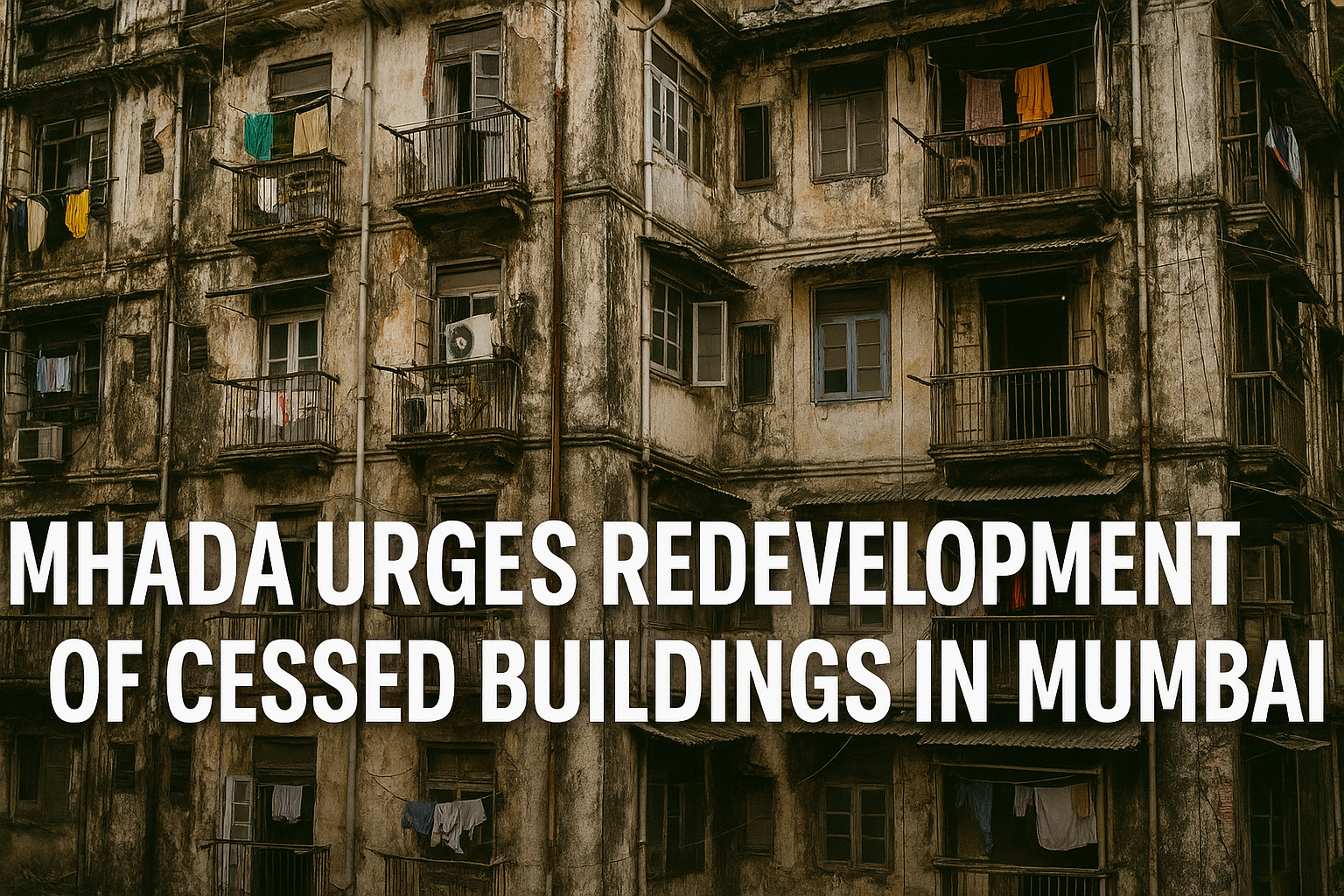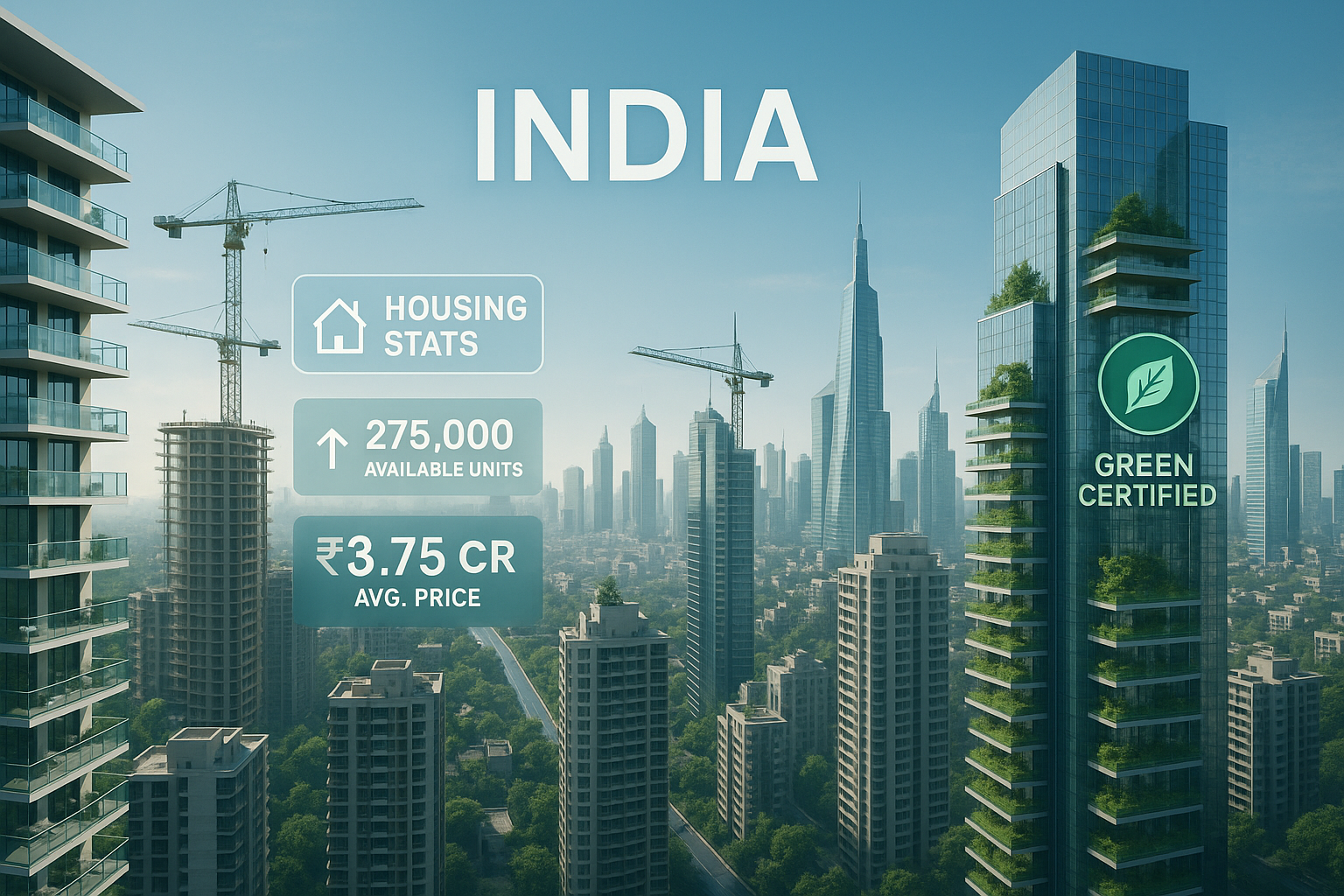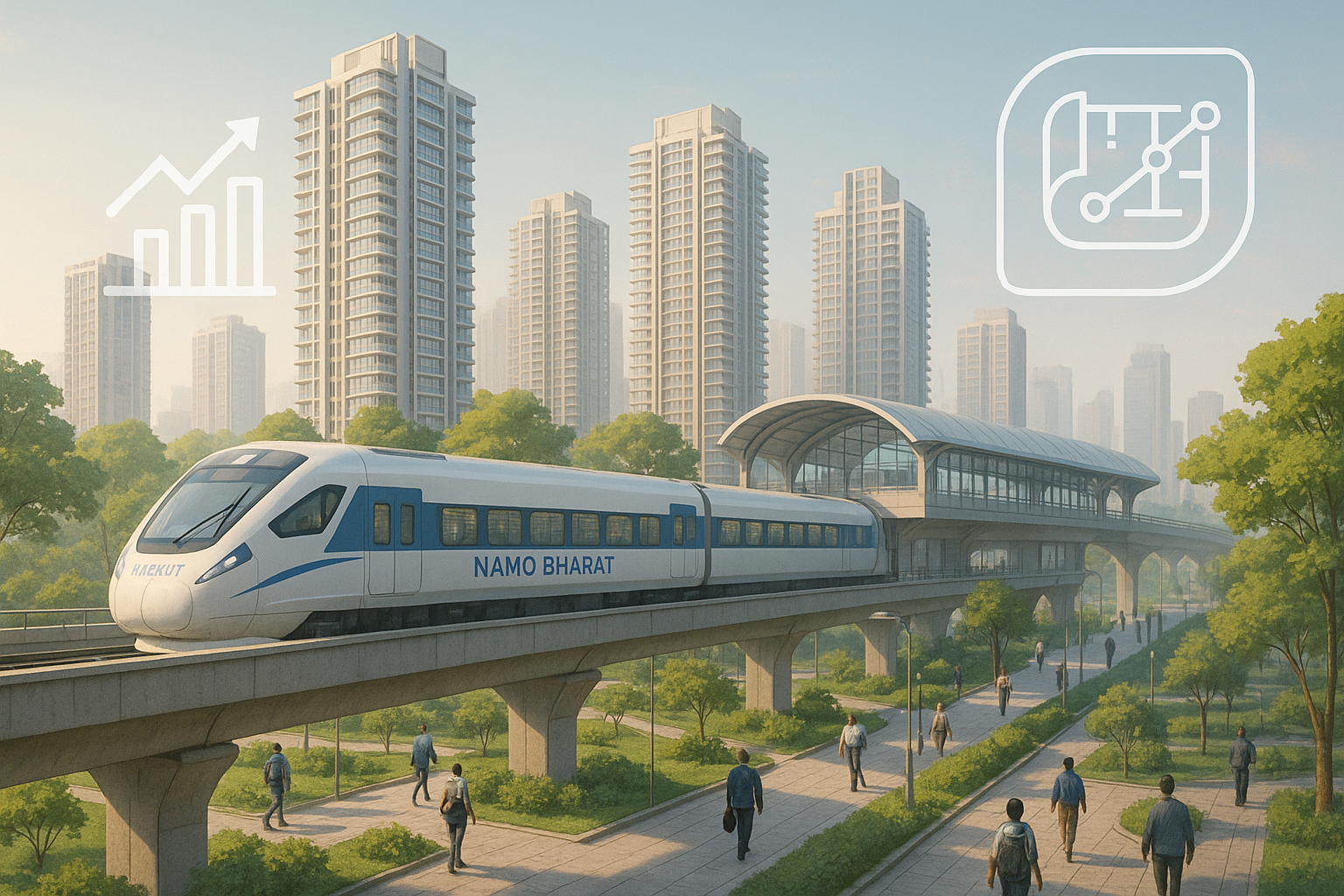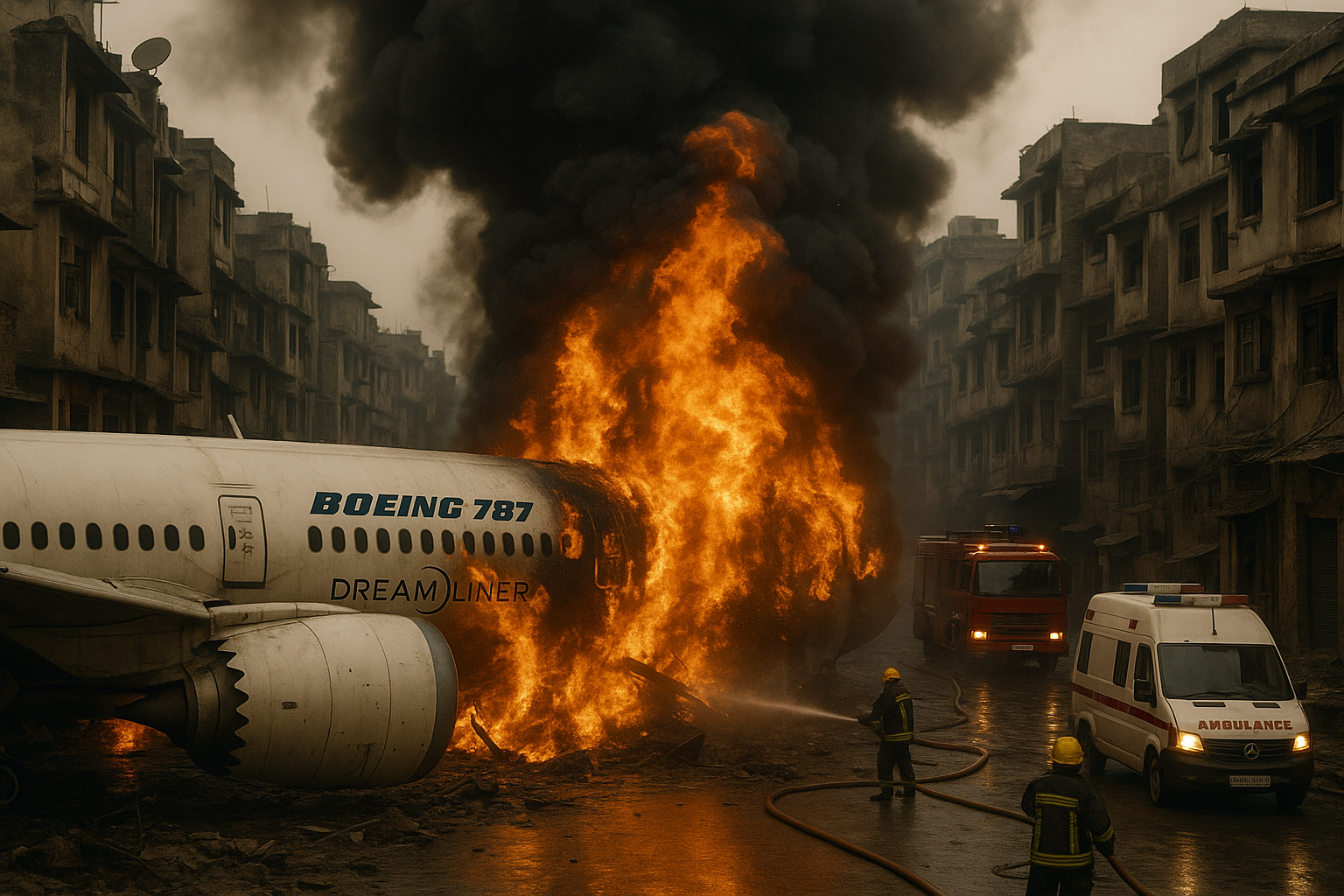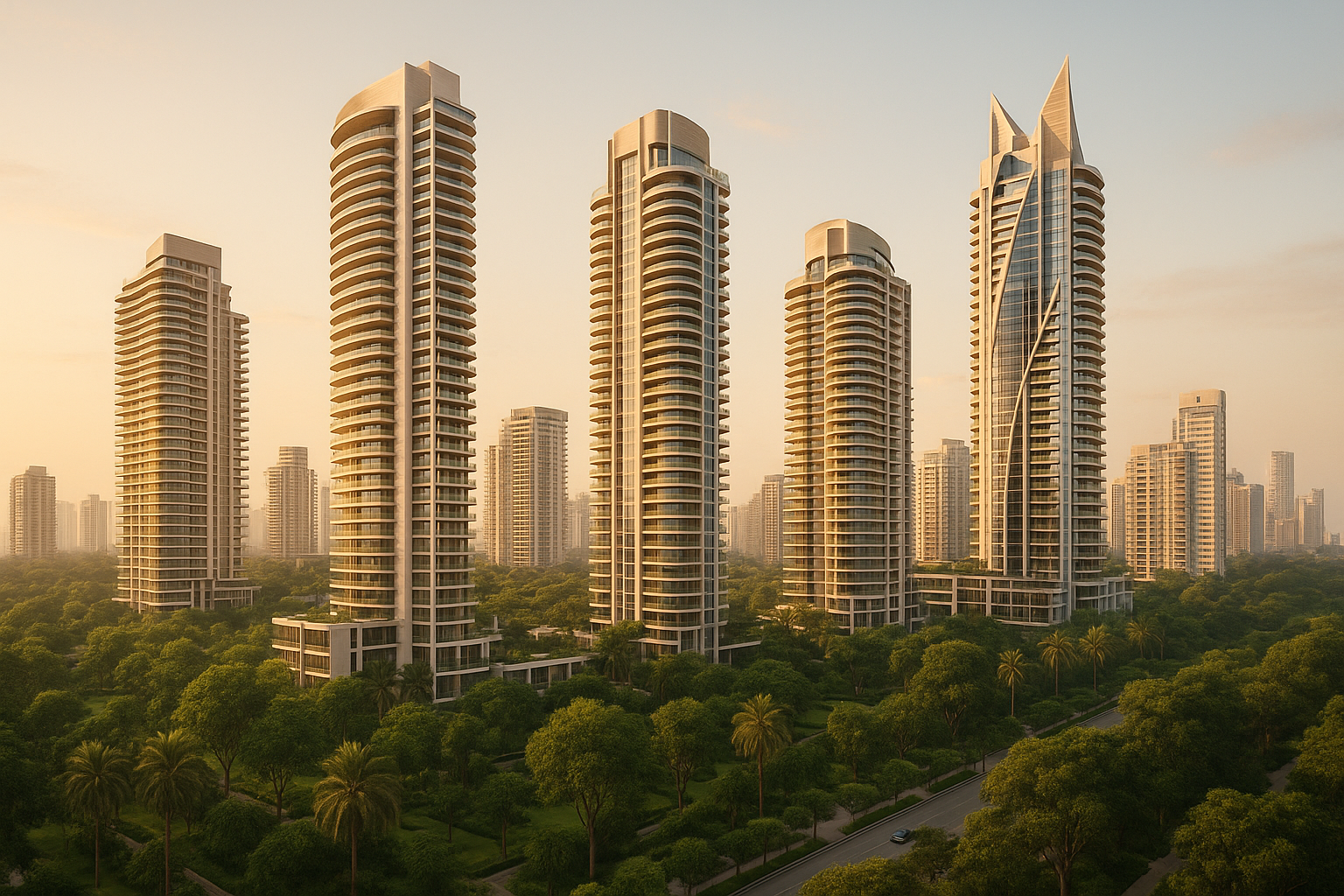MHADA Pushes for Redevelopment of Old Cessed Buildings in Mumbai’s Island City
The Maharashtra Housing and Area Development Authority (MHADA) has called for the redevelopment of cessed buildings in Mumbai’s island city, emphasizing the urgency due to structural safety concerns. With over 13,000 such buildings identified, MHADA is actively reaching out to landlords and residents to initiate redevelopment processes promptly.
Why now? Simply put, many of these aging buildings are no longer safe. They’re not only eyesores but potential safety hazards. Yet, the path to redevelopment is riddled with challenges that have kept transformation on hold for years.
What Are Cessed Buildings Anyway?
Before jumping into the issue, let’s break down what cessed buildings are. These are structures built before 1940 that fall under a special “cess tax” in Mumbai. Property owners pay this tax, and in return, MHADA is tasked with taking care of them—particularly their repairs.
But here’s the problem: These buildings are old, some more than 80 years old. No matter how many times they’re patched up, they really need to be rebuilt from scratch. Think of it as trying to keep using a 1930s car—with all original parts. At a point, it simply stops being safe—or fixable.
Why MHADA Is Speaking Out Now
MHADA officials are sounding the alarm—with good reason. There are roughly 14,000 cessed buildings in Mumbai’s Island City, with over 10,000 of them declared “extremely dilapidated”. They’re like ticking time bombs in busy residential areas.
So, what’s the big risk? In a city as densely populated as Mumbai, even the partial collapse of a building can lead to major loss of life and property. And we’ve already seen tragic incidents that show just how serious this matter is.
What’s Holding Back Redevelopment?
You might be wondering, “If these buildings are so dangerous, why haven’t they been redeveloped already?”
The answer is a mix of legal roadblocks, unclear policies, and lack of motivation from private builders. Here are some major stumbling blocks:
- Low Floor Space Index (FSI): Developers say they can’t make a profit under the current FSI rules, which limit how tall or large they can build.
- Lengthy Approval Process: Redevelopment projects often get stuck waiting for clearances from multiple departments. Imagine trying to get ten stamps just to start work—it kills motivation fast.
- Unclear Government Guidelines: Ambiguity in policy is another big hurdle. Everyone from developers to tenants stays uncertain, leading to prolonged delays.
- Funding Challenges: Redevelopment isn’t cheap. Without adequate financial incentives or funding models, developers aren’t lining up to take on these projects.
The Solutions That Are Being Proposed
MHADA isn’t just pointing out the problem; they’ve come bearing solutions too. Here’s what they’re suggesting:
- Increase FSI: A higher Floor Space Index would allow developers to build more homes, making projects financially viable.
- Single-Window Clearance: One of the smartest suggestions is a single-window system to fast-track redevelopment approvals. No more red tape, just one doorway to greenlighting the project.
- Special Funding Options: Financial support or easier loan approvals would ease some burdens off developers’ shoulders.
- Government-Led Redevelopment: In buildings deemed too dangerous, MHADA recommends government-led reconstruction, bypassing private delays.
Voices from the Ground: What Residents Are Saying
For residents stuck in these crumbling properties, the choice isn’t easy. “We know the risk, but where will we go during redevelopment?” asks Ramesh Mehta, a 76-year-old tenant from Girgaon. Like many others, his family has lived in the same building for generations. Leaving requires guarantees—safe temporary accommodation and a timely return to a new home.
These emotional, historical, and financial ties make redevelopment a deeply personal issue for thousands of Mumbaikars.
Why This Matters for Mumbai’s Future
At its core, this isn’t just about buildings. It’s about lives. Redevelopment can:
- Improve safety for thousands of families living in dangerous structures.
- Revitalize old parts of the city with modern infrastructure.
- Free up badly needed residential space in a hyper-urbanized city.
- Create jobs and economic growth through construction activity.
Think of redevelopment as an engine that can breathe fresh life into Mumbai’s core. It’s a chance to give the Island City a much-needed facelift—one that respects its heritage while preparing it for the future.
What Needs to Happen Next?
This push from MHADA can’t just be another discussion. It needs action—and soon. For that, the state government must step in with:
- Clearer policies specifically aimed at cessed building redevelopment.
- Financial packages or subsidies to make projects interesting for developers.
- Stronger community engagement to gain trust and support from residents.
The quicker red tape is cut, and the faster approvals and incentives roll out, the sooner we’ll see real transformation on the ground. It’s time to shift from debate to do.
In Conclusion: A Call for Urgency
Redevelopment of cessed buildings in Mumbai’s Island City isn’t just a policy issue—it’s a safety imperative. The longer we wait, the higher the risk to thousands of lives tucked inside these old, weary shells of buildings.
MHADA has raised a red flag. Now, it’s up to the government, developers, and even residents to rally together. After all, when lives and legacies are at stake, can we really afford to delay?
If you live in one of these buildings or know someone who does, now might be the time to speak up, ask questions, and push for change. As Mumbai dreams of becoming a global city, cleaning up its foundation is where that dream must begin.
Let’s give the Island City the strong heart it deserves—before it’s too late.
